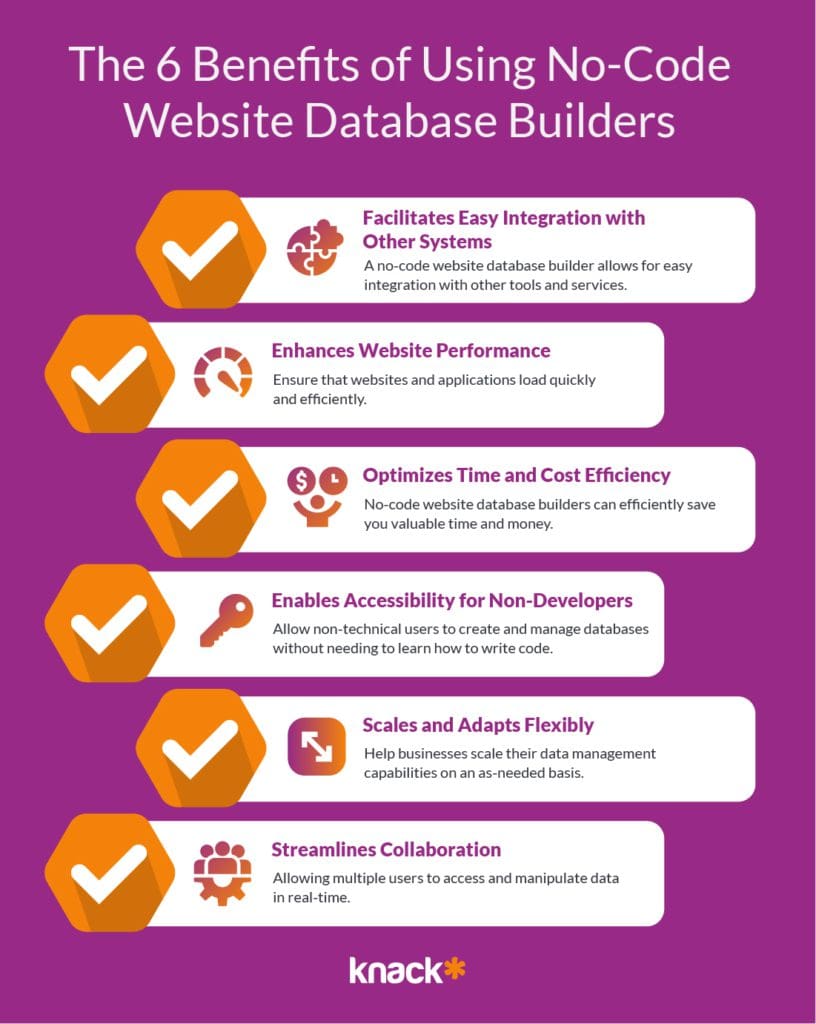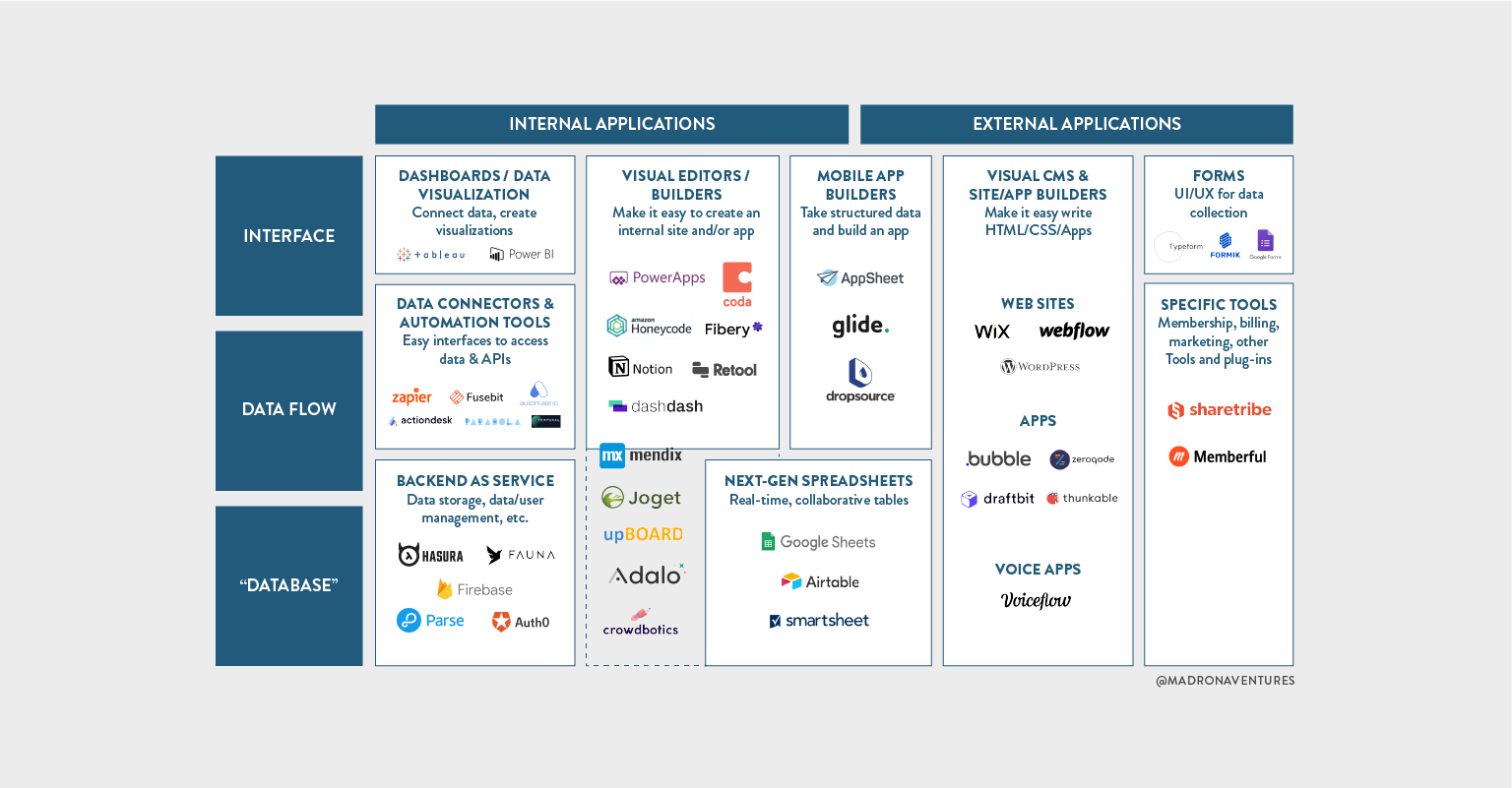Effortless Open Platform Database Production Using No-Code Innovation
Wiki Article
Checking Out the Advantages of Scalable Data Sources That Require No Coding Skills for Reliable Data Monitoring Solutions
The introduction of scalable databases that eliminate the necessity for coding skills presents a transformative chance for organizations seeking effective data monitoring solutions. By making it possible for non-technical users to harness the power of data via user-friendly interfaces, these systems boost access and foster cooperation throughout varied groups. Their cost-effectiveness and flexibility to developing business needs can significantly streamline operational procedures. As we consider the effects of such advancements, it comes to be essential to analyze just how they can reshape the landscape of data administration and drive sustainable growth in an affordable environment.Enhanced Ease Of Access for Users
Boosted ease of access for customers is an essential facet of scalable databases, making sure that data administration systems are user-friendly and intuitive. In a period where data-driven choices are paramount, access allows a larger array of users, including those without considerable technological know-how, to engage with database systems properly. This democratization of information gain access to promotes improved partnership throughout departments, equipping workers to draw out understandings and make notified decisions.Easy to use user interfaces, such as aesthetic information and drag-and-drop features representation, streamline complicated data interactions. These improvements decrease the understanding curve related to standard data source administration, allowing individuals to concentrate on leveraging data instead than coming to grips with technological complexities. Furthermore, scalable databases commonly include real-time analytics and customizable dashboards, giving users with prompt insights customized to their details demands.

Cost-Effectiveness and Source Cost Savings
Reliable information management not only depends upon access yet likewise on cost-effectiveness and resource financial savings. Scalable data sources developed for customers with no coding abilities dramatically reduce financial worries generally associated with standard data source administration systems. By removing the need for specialized programs proficiency, organizations can allocate their sources more efficiently, concentrating funds on core company tasks as opposed to considerable training or employing competent personnel.In addition, these databases usually make use of cloud-based solutions, which even more decrease prices associated with equipment and upkeep. Organizations can scale their database solutions according to their needs, preventing the expenditures incurred from over-provisioning sources. This versatility means organizations can adjust to altering demands without sustaining unnecessary expenses, bring about significant lasting cost savings.
Additionally, straightforward interfaces improve information entry and administration procedures, lowering the moment invested on administrative tasks. This efficiency translates right into labor expense savings, allowing groups to concentrate on critical campaigns as opposed to routine maintenance. In general, embracing scalable databases that need no coding abilities fosters an extra cost-efficient approach to information monitoring, allowing companies to maximize their sources while preserving high degrees of functional next page efficiency.
Improved Cooperation Throughout Teams

In addition, scalable databases promote seamless interaction among staff member. With easy to use user interfaces that need no coding skills, staff members can easily develop, modify, and share records or control panels customized to their certain demands. This democratization of data equips non-technical individuals to add understandings, enhancing the joint environment.
Furthermore, these data sources support simultaneous access, enabling numerous individuals to deal with the same dataset simultaneously. This function enhances performance, as groups can take part in joint information analysis without the risk of version control issues. The capacity to leave comments or notes directly within the data source even more promotes dialogue and makes clear information analyses.
Streamlined Information Monitoring Processes
In today's data-driven environment, organizations acknowledge the need of streamlined information administration processes to make best use of effectiveness and precision. By leveraging scalable databases that call for no coding abilities, businesses can simplify their data handling and decrease the complexities commonly related to conventional data source systems. This ease of access empowers Continued non-technical individuals to engage directly with data, promoting quicker decision-making and lowering reliance on specialized IT employees.Streamlined information administration procedures boost process by automating routine jobs such as information entry, recognition, and coverage. Automated data assimilation makes certain that information from numerous resources is aggregated seamlessly, getting rid of silos and cultivating a merged view of crucial company metrics (no-code). Easy to use interfaces allow personnel to manipulate information easily, allowing them to generate understandings that drive calculated campaigns without the demand for try this comprehensive training.
This efficiency not only accelerates operational processes however additionally decreases the possibility for human mistake, ensuring that information stays reliable and precise. Inevitably, structured information administration processes through scalable databases bring about enhanced performance, enabling companies to concentrate on core activities while making sure that their information monitoring practices are reliable and effective.
Scalability for Growing Companies

For increasing business, the ability to scale up or down is important. A scalable data source can deal with an increase of data created from brand-new customers, products, or services, ensuring that service procedures remain nonstop. These databases supply the capacity to manage peak tons effectively, which is necessary during durations of quick development or seasonal spikes.
In addition, several scalable database services are created with straightforward interfaces that require no coding abilities, empowering non-technical team to take care of information successfully (no-code). This democratization of data management allows companies to allot resources tactically and decrease reliance on specialized IT workers
Eventually, adopting a scalable data source not just boosts functional performance but additionally cultivates an atmosphere where services can innovate and advance without the constraints of standard data source systems. This adaptability placements companies for lasting success in today's competitive landscape.
Conclusion
In conclusion, scalable data sources that call for no coding abilities supply significant benefits for efficient information monitoring. By improving information management processes and offering scalability for growing businesses, such options allow companies to adapt to transforming demands effectively.Boosted accessibility for customers is an essential aspect of scalable data sources, making sure that data monitoring systems are instinctive and user-friendly.Straightforward interfaces, such as visual information and drag-and-drop attributes depiction, simplify complicated data interactions. On the whole, adopting scalable data sources that need no coding skills fosters a more economical approach to information administration, making it possible for companies to maximize their resources while keeping high levels of functional performance.
By leveraging scalable data sources that require no coding skills, companies can simplify their information handling and minimize the complexities generally connected with conventional database systems - no-code.Structured information administration procedures enhance operations by automating regular jobs such as data entrance, recognition, and coverage
Report this wiki page